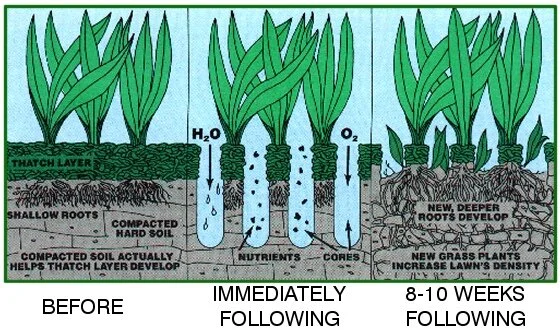Do you have a waterlogged lawn? Waterlogging can harm your grass. It can make your lawn look ugly. But don’t worry! You can fix a waterlogged lawn with these easy steps. Let’s learn how!
What is a Waterlogged Lawn?
A waterlogged lawn has too much water. The water does not drain away. This can happen after heavy rain. It can also happen if the soil does not drain well.
Why is Waterlogging Bad?
Waterlogging is bad for your lawn. Here are some reasons why:
- Grass Can’t Breathe: Grass roots need air. Too much water stops air from getting to the roots.
- Grass Can Rot: Water can make the roots rot. Rotting roots kill the grass.
- Moss and Weeds: Waterlogged lawns attract moss and weeds. They make your lawn look bad.
- Pests: Wet soil attracts pests. Pests can harm your grass.

Credit: www.greenfeet.ie
How to Spot a Waterlogged Lawn
Look for these signs to know if your lawn is waterlogged:
- Puddles of water on the lawn.
- Grass looks yellow or brown.
- Soil feels soggy.
- Moss or weeds growing.
- Bad smell from the lawn.

Credit: turfworld.co.uk
Steps to Fix a Waterlogged Lawn
Follow these steps to fix your waterlogged lawn:
1. Aerate Your Lawn
Aeration helps air get to the roots. Use a garden fork or an aerator. Make holes in the soil. This helps water drain away.
2. Improve Soil Drainage
Good soil drainage is important. Add sand or compost to the soil. This improves drainage. Mix them well with the soil.
3. Create Drainage Channels
Drainage channels help water flow away. Dig small trenches in the lawn. Fill them with gravel. This helps water move away from the lawn.
4. Use A French Drain
A French drain is a trench filled with gravel and a pipe. It helps move water away from the lawn. Dig a trench. Place a pipe in it. Cover the pipe with gravel. This helps water flow away.
5. Plant Water-loving Plants
Some plants love water. They can help soak up extra water. Plant them in the wet areas. Examples are willows and ferns. They help reduce waterlogging.
6. Level Your Lawn
Low spots can cause water to collect. Level your lawn to fix this. Add soil to the low spots. Make sure the lawn is even.
7. Check And Fix Gutters And Downspouts
Gutters and downspouts can cause waterlogging. Check them for clogs. Make sure they direct water away from the lawn. Fix any issues you find.
8. Build A Rain Garden
A rain garden is a garden designed to soak up rainwater. It can help with waterlogging. Plant it in a low spot. Use water-loving plants. This helps reduce water on the lawn.
Preventing Future Waterlogging
Here are some tips to prevent waterlogging in the future:
- Regular Aeration: Aerate your lawn regularly. This helps keep the soil healthy.
- Good Soil Mix: Use a good mix of soil. Add sand and compost to improve drainage.
- Proper Watering: Don’t overwater your lawn. Water it only when needed.
- Maintain Gutters: Keep gutters and downspouts clean. Make sure they work well.
- Check for Low Spots: Look for low spots regularly. Fix them to prevent waterlogging.
Frequently Asked Questions
What Causes A Waterlogged Lawn?
Excessive rain, poor drainage, and compacted soil are common causes.
How Can I Improve Lawn Drainage?
Use aeration techniques or install French drains to improve water flow.
Can Aeration Help With Waterlogged Lawn?
Yes, aeration allows water to penetrate deeper, reducing surface waterlogging.
What Are Signs Of A Waterlogged Lawn?
Puddles, squishy ground, and yellowing grass indicate waterlogging issues.
Conclusion
Fixing a waterlogged lawn is easy. Aerate the lawn and improve soil drainage. Create drainage channels or use a French drain. Plant water-loving plants and level the lawn. Check gutters and build a rain garden. Follow these steps to keep your lawn healthy and beautiful. Happy gardening!
